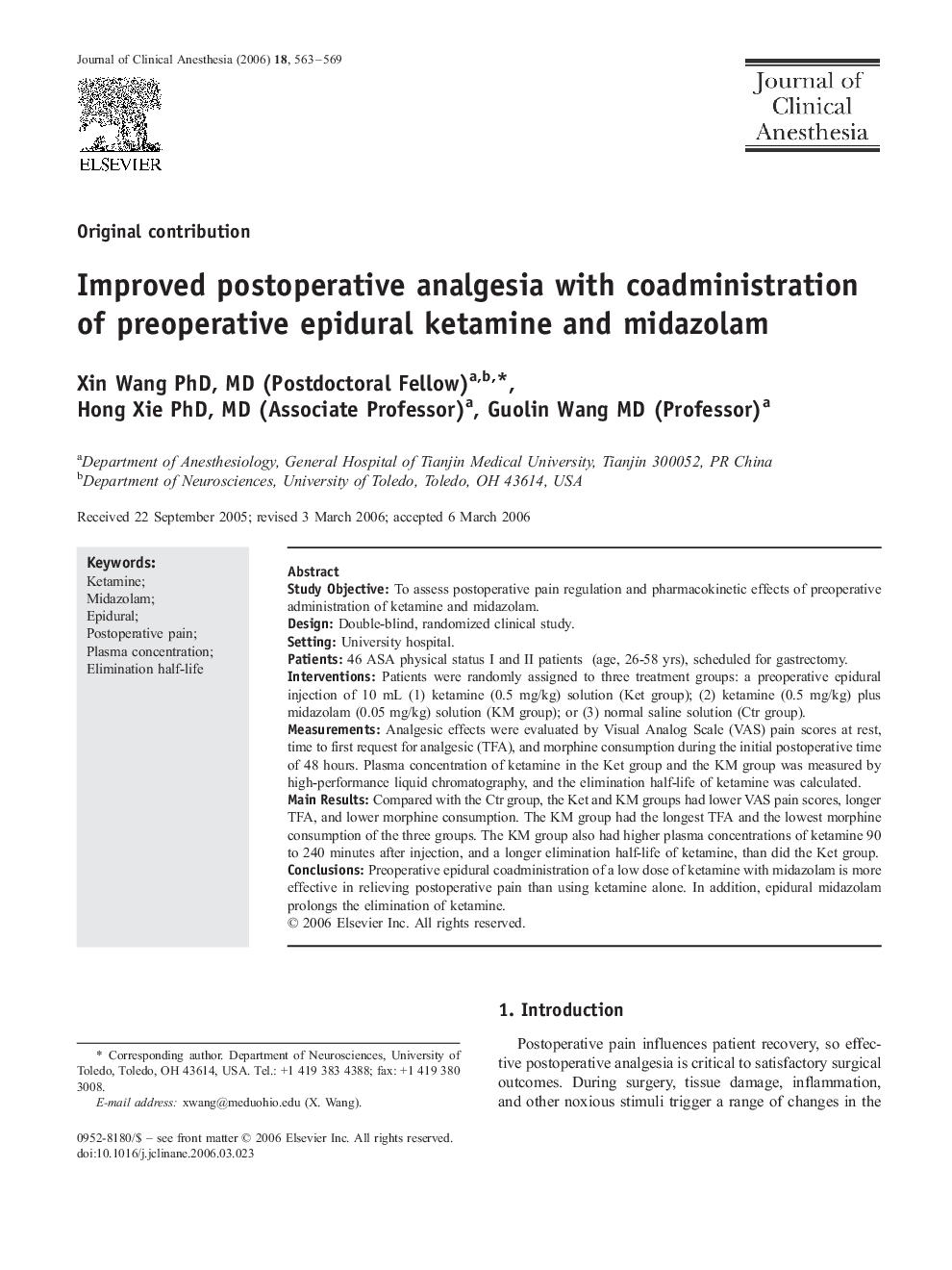| Article ID | Journal | Published Year | Pages | File Type |
|---|---|---|---|---|
| 2764108 | Journal of Clinical Anesthesia | 2006 | 7 Pages |
Study ObjectiveTo assess postoperative pain regulation and pharmacokinetic effects of preoperative administration of ketamine and midazolam.DesignDouble-blind, randomized clinical study.SettingUniversity hospital.Patients46 ASA physical status I and II patients (age, 26-58 yrs), scheduled for gastrectomy.InterventionsPatients were randomly assigned to three treatment groups: a preoperative epidural injection of 10 mL (1) ketamine (0.5 mg/kg) solution (Ket group); (2) ketamine (0.5 mg/kg) plus midazolam (0.05 mg/kg) solution (KM group); or (3) normal saline solution (Ctr group).MeasurementsAnalgesic effects were evaluated by Visual Analog Scale (VAS) pain scores at rest, time to first request for analgesic (TFA), and morphine consumption during the initial postoperative time of 48 hours. Plasma concentration of ketamine in the Ket group and the KM group was measured by high-performance liquid chromatography, and the elimination half-life of ketamine was calculated.Main ResultsCompared with the Ctr group, the Ket and KM groups had lower VAS pain scores, longer TFA, and lower morphine consumption. The KM group had the longest TFA and the lowest morphine consumption of the three groups. The KM group also had higher plasma concentrations of ketamine 90 to 240 minutes after injection, and a longer elimination half-life of ketamine, than did the Ket group.ConclusionsPreoperative epidural coadministration of a low dose of ketamine with midazolam is more effective in relieving postoperative pain than using ketamine alone. In addition, epidural midazolam prolongs the elimination of ketamine.
